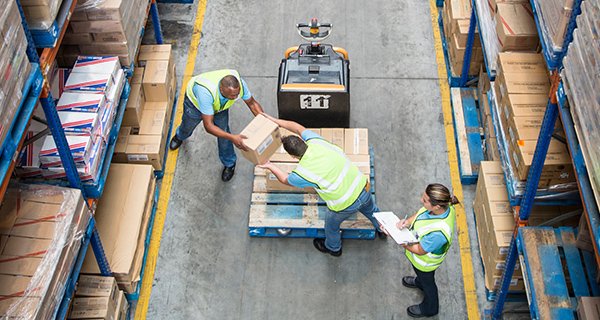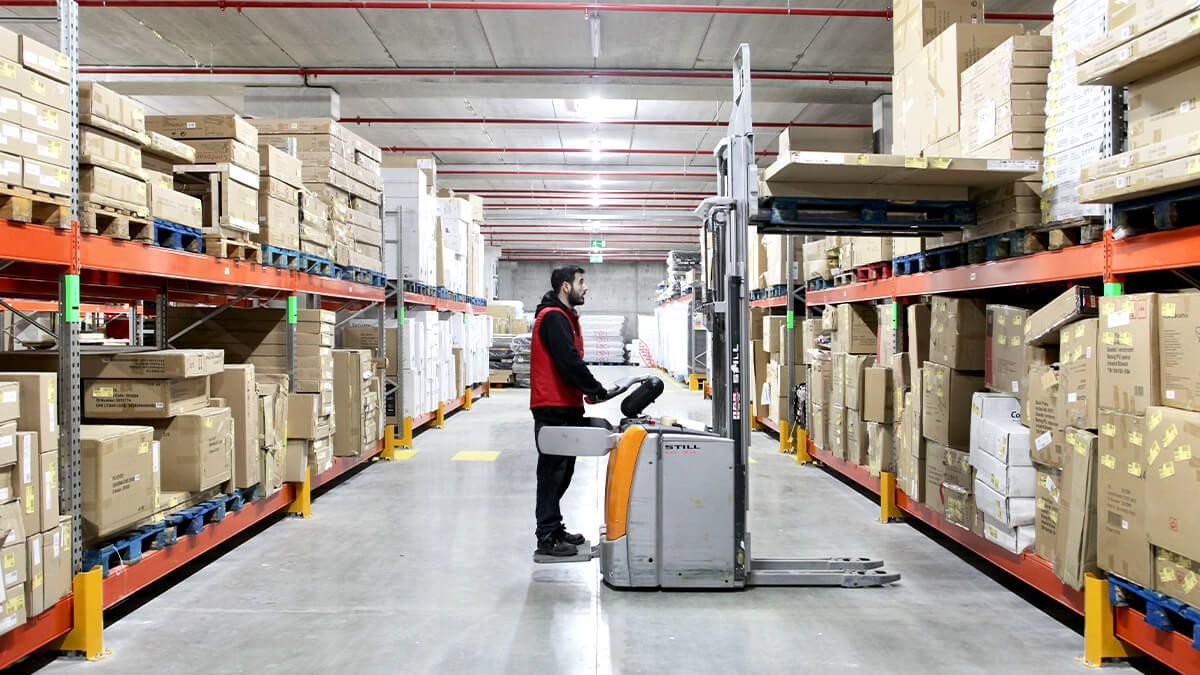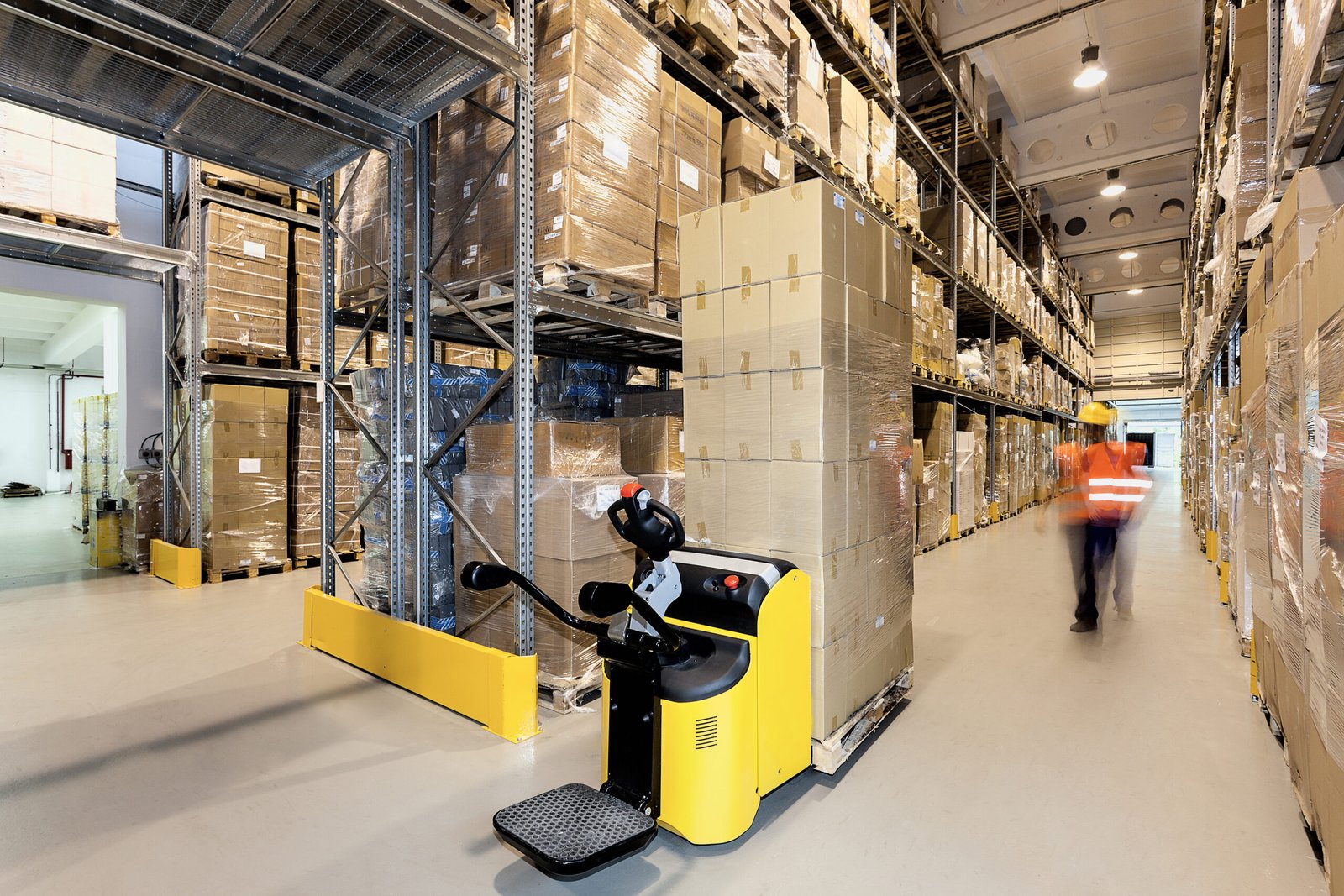Within the ever-changing pharmaceutical industry, where each tablet and vial has the potential to cure, there’s a little-known yet vital procedure called reverse logistics. Think of this as a medicine’s return trip—when it needs to be disposed of properly or doesn’t make it into the hands of a patient. We explore the complexities of pharmaceutical reverse logistics in this article, revealing best practices that can turn this sometimes disregarded field into a well-functioning unit.

The Hidden Challenge
Patient care, medication development, and clinical trials are the three cornerstones of the pharmaceutical sector. Yet, reverse logistics treads lightly among these imposing buildings. The problem is that ineffective reverse logistics might put the entire procedure in danger. It causes a disruption in the picture of success, much like a missing puzzle piece.
The Puzzle
Why is the logistics of reversing so complex? Let’s analyze the task:
- Absence of Foundational Best Practices: Reverse logistics does not have a comprehensive playbook, in contrast to other areas of clinical trials. Here, we’re traveling through unknown territory.
- Accountability and Risk Management: Imagine this: When a clinical trial comes to an end, the research supplies must be taken home. But chaos results from a lack of risk assessment, efficient planning, and defined responsibilities. Study closing delays become the norm, and data integrity is jeopardized.
- Regulatory Maze: Coordinating local environmental laws, import/export legislation, Good Clinical Practice (GCP), Good Manufacturing Practice (GMP), and customs restrictions is like directing a symphony with disparate instrumentation.

The Guiding Light: ISPE Good Practice Guide
Open the ISPE Good Practice Guide: Reverse Logistics for Investigational Medicinal Products. Let’s examine its main conclusions:
- Organizing Forward: Prepare for any setbacks before the study ever begins. What happens if it isn’t possible to import drugs to destroy them? What happens if the trial’s site capabilities change? Plan ahead, be strategic, and develop resilience.
- Quality Governance: Create a policy inside the organization that specifies which area of Quality Assurance (QA) is in charge of which process. This policy makes ensuring there is uniformity in the event of audits or deviations. Determine who is in charge—GCP or GMP.
- Utilize technology as your ally to manage, track, and keep an eye on returns. Barcodes, real-time systems, and RFID tags help you stay on top of the game.
- Product Features: Recognize the qualities of your test products. While some are temperature-sensitive, others are delicate. Adjust your logistics appropriately.
- Trial Conduct Considerations: Labels and boxes aren’t the only things in reverse logistics. It has to do with preserving data integrity. Make sure the trial’s validity isn’t compromised by the returned materials.
- Common Errors: Take note of what others have done wrong. The manual points out common mistakes to avoid, such as thinking about reverse logistics last.
Important lessons learned
- Cooperation: Teams from QA, logistics, and clinical must move in unison. Gaps are filled by communication.
- Unambiguous SOPs: SOPs, or standard operating procedures, are your guide. Pay close attention to them.
- Assessing costs: Be aware of the cost of returns. Include it in your logistical plan.
Conclusion
Pharmaceutical reverse logistics is the crescendo of a symphony, not a footnote. By adhering to best standards, we streamline the return process and make sure that each vial is placed in its proper location. Thus, let us rewrite the story: from ignored to orchestrated, from disorder to harmony.
What is the impact of ineffective reverse logistics on the pharmaceutical sector?
In the pharmaceutical sector, ineffective reverse logistics is a silent saboteur that slowly destroys the ecosystem as a whole. Let’s examine its effects:
- Financial Drain: Picture a pail that leaks. Reverse logistics inefficiencies are a financial and operational resource waster. The supply chain falters, returns mount, and storage prices soar. What was the outcome? Profit margins are declining.
- Data Integrity at Risk: A wealth of data is produced by clinical trials. Yet data integrity falters when returning items are not handled with care. Drug development is put at risk by skewed outcomes resulting from inaccurate records.
- The regulatory maze Imagine this: A drug that is returned crosses international borders. It must comply with import/export rules, environmental legislation, and customs procedures. Attempting to navigate this maze without a compass—that is, without effective reverse logistics—will not end well. Nightmares about compliance loom.
- Patient safety: A medication that has gone bad or expired re-enters the system. Like a time bomb on ticking time. Reverse logistics that are not effective endanger patient safety. Envision a confusion: incorrect drug, incorrect dosage. The repercussions are severe.
- Impact on the Environment: Medicines aren’t just regular products. They are powerful substances. Safe disposal is of the utmost importance. Ineffective reverse logistics cause incorrect disposal, which is bad for the environment and the general public’s health.
- Operational bottlenecks: Envision a disorganized warehouse full of returns. There is pandemonium. Ineffective procedures impede restocking, postpone study closures, and throw off the rhythm of the supply chain. Bottlenecks in operations spread throughout the sector.
- Lost Opportunities: Reverse logistics efficiency goes beyond damage control. It’s a chance to recover priceless resources. Drug returns can be recycled, given, or used for another purpose. Ineffectiveness wastes these opportunities.
Important lessons learned:
- Strategic Planning: Plan ahead, factor in returns, and integrate reverse logistics into your overall clinical trial design.
- Adoption of Technology: Embrace technology with RFID tags, smart systems, and real-time tracking.
- Cooperation: Teams from QA, logistics, and clinical must move in unison. Gaps are filled by communication.
What difficulties do you have while putting these best practices into practice?
Of course! It’s not easy to put best practices for pharmaceutical reverse logistics into practice. Let’s examine a few of the difficulties that businesses face:
- Intricate Regulatory Environment:
- Getting Around the Regulatory Labyrinth: The pharmaceutical sector must abide by a complex network of laws, including those pertaining to customs, environmental protection, good manufacturing practice (GMP), and clinical practice (GCP). Every nation offers an own twist. Cross-border compliance assurance is akin to directing a symphony with disparately tuned instruments.
- Customs and Import/Export Laws: Returning experimental goods necessitates traveling across international borders. Obstacles include import/export paperwork, customs processes, and local law compliance. If you handle them improperly, there may be delays, penalties, or even legal ramifications.
- Absence of Guidelines and Standards:
- Foundational Best Practices: There isn’t a comprehensive playbook for reverse logistics, in contrast to other areas of clinical trials. Businesses frequently find themselves in unfamiliar territory. It gets difficult to establish basic best practices.
- Industry-Specific Guidelines: Although the ISPE Good Practice Guide clarifies the reverse logistics of experimental medical products, there are presently few industry-wide guidelines available. Businesses struggle with different interpretations and procedures.
- Accountability and Risk Management:
- Study Closure Delays: Research closures may be postponed due to ineffective reverse logistics. Imagine that a clinical trial is coming to an end, but the return trip is coming to a standstill. Progress is hampered by unclear responsibilities, inadequate risk management techniques, and unclear responsibility.
- Data Integrity: Important data is contained in returned goods. Handling them incorrectly puts data integrity at risk. For future research and regulatory submissions, accurate records are crucial. It’s a tightrope dance to make sure that returned materials don’t compromise the validity of the trial.
- Challenges in Operations and Logistics:
- Product Features: Research items come in a variety of forms; some are temperature-sensitive, others are fragile. It is crucial to adjust logistics to account for these subtleties.
- Trial Conduct Considerations: Labels and boxes aren’t the only things in reverse logistics. It has to do with preserving data integrity. Careful treatment is necessary to make sure that returned materials don’t jeopardize the legality of the trial.
- Adoption of Technology: It’s critical to use technology to track, monitor, and manage returns. Barcodes, real-time systems, and RFID tags help firms stay competitive.
- Common Errors: It’s important to learn from the mistakes made by others. Vigilance is needed to recognize and steer clear of frequent mistakes, such as considering reverse logistics as an afterthought.
- Working Together and Communicating:
- Silos and Communication Gaps: Cooperation is necessary for effective reverse logistics. Clinical teams, logistics, and quality assurance (QA) must work together harmoniously. Silos impede advancement. It’s critical to close gaps in communication.

- Assessment of Costs and Allocation of Resources:
- Cost-Balancing: Reverse logistics efficiency isn’t free. Businesses need to assess the costs related to returns, storage, shipping, and disposal. It takes skill to walk a tightrope between cost-effectiveness, compliance, and patient safety.
- Allocating Resources: Allocating technology and human resources for reverse logistics is in competition with other goals. Businesses need to find a careful balance.
In conclusion, a combination of technical adoption, regulatory knowledge, strategic planning, and a collaborative attitude are needed to establish best practices for pharmaceutical reverse logistics. The path from ignored to orchestrated, from chaos to concerto, is what this is all about.
How can drug manufacturers guarantee patient security when using reverse logistics?
It is crucial to guarantee patient safety when handling pharmaceutical reverse logistics. Let’s examine methods to keep patients safe during this complex procedure:
- Tight Handling Procedures:
- Verification and Inspection: Careful inspection is necessary when receiving returned medications. Check the expiration dates, packaging, and integrity of the products. Any indications of damage or tampering need to be addressed right once.
- Temperature Control: A few drugs have a temperature threshold. On the return trip, keep your belongings in appropriate storage conditions. Cold chain management makes sure that sensitive goods like vaccines and biologics continue to work as intended.
- Documentation and Traceability:
- Track and Trace Systems: Put in place reliable tracking mechanisms. Barcodes, serial numbers, and RFID tags facilitate the tracking of a product’s route. Transparency is ensured by accurate paperwork.
- Keep a clear chain of custody at all times. At each level, note who is in charge of handling the returned materials. As a result, there is less chance of contamination or confusion.
- Supervision of Quality Assurance (QA):
- QA Checks: QA teams are essential. Protocol compliance is ensured via routine inspections. They confirm the returned medications are of high quality standards.
- Batch-Level Evaluation: Evaluate each returned batch as a whole. If abnormalities appear, look into them right away. QA teams serve as a link between safety and logistics.
- Working Together Among Stakeholders:
- Clinical Teams: Work together as a team. Make sure they are informed about returned items. Clinical teams need to evaluate the safety of any medications that are reentering the supply chain.
- Healthcare Professionals: Interact with healthcare professionals. Notify the appropriate parties if a patient received a medicine that was returned. Unintentional administration is avoided with prompt intervention.
- Disposal and Destruction:
- Safe Disposal: Some returned drugs can’t re-enter the supply chain. Proper disposal is critical. Follow environmental guidelines. Incineration or other approved methods prevent contamination.
- Destruction Protocols: Destroy drugs irreversibly. Render them unusable. Document the destruction process meticulously.
- Education and Training:
- Personnel Training: Train staff involved in reverse logistics. They should understand safety protocols, risk management, and the importance of patient well-being.
- Awareness campaigns: Inform staff members of the consequences of their conduct. Patient safety is a concrete concept rather than an abstract one.
- Evaluation and mitigation of risks:
- Risk Matrix: Assess the dangers of medicine returns. Take into account elements like as potency, infection, and storage circumstances. Create a risk matrix to help you make decisions.
- Strategies for Mitigation: Make backup plans. What happens if a medicine that is returned doesn’t pass quality assurance inspections? What is your plan for recalls? Get ready.
- Interaction with Patients:
- Transparency: Be upfront with patients if their medication is being returned. Give them choices, reassure them, and explain the issue.
- Adverse Event Reporting: Urge patients and medical professionals to report any negative effects associated with medicine returns. Being alert is essential.
- Constant Enhancement:
- Learn from Mishaps: Conduct in-depth investigations following any safety accidents. Analyze the root cause to stop recurrences.
- Feedback Loop: Get input from patients, medical professionals, and logistics teams, among other stakeholders. Logistics in reverse are safer when they are continuously improved.
The crescendo in the pharmaceutical symphony is patient safety. Let’s make sure that every vial contains healing rather than damage by harmonizing the return journey note by note.
ISPE Good Practice Guide: Reverse Logistics for Investigational Medicinal Products

This manual provides instructions on how to organize and carry out a reverse logistics procedure that works well in any supply chain for experimental products. It demonstrates the following recommended practices:
- Thorough Preparation:
- Getting Ready for Difficulties: Planning beforehand is emphasized in the guide. It pushes companies to think about possible problems before a clinical trial starts. What happens if it isn’t possible to import drugs to destroy them? What happens if the trial site’s capabilities change? Businesses strengthen their resilience by anticipating and mitigating these scenarios.
- Company Policy: The handbook encourages creating a policy for the company that will be relevant to every clinical trial. This policy makes it clear which process is governed by which Quality Assurance (QA) area. Making this decision can be difficult, particularly when there are audits or deviations. Following standard operating procedures consistently is ensured by a clearly established policy.
- Adoption of Technology and Risk Management:
- Risk Mitigation: Throughout the reverse logistics process, the guidance places a strong emphasis on risk management. It motivates businesses to assess possible risks, build mitigation plans, and produce a risk matrix.
- Technology Utilization: It is essential to make use of technology. Traceability is improved via barcodes, RFID tags, and real-time tracking systems. These solutions facilitate effective return handling and keep organizations informed.
- Working Together and Communicating:
- Stakeholder Alignment: Teamwork is necessary for efficient reverse logistics. Teams from QA, logistics, and clinical must collaborate. Processes run more smoothly when gaps in communication are filled.
- Awareness Campaigns: The handbook emphasizes the significance of educating staff members. Everyone engaged needs to be aware of how their activities affect patient safety.
- Typical Errors and Things Learned:
- Preventing Mistakes: The guide helps businesses avoid mistakes by talking about frequent pitfalls. Avoiding the mistake of treating reverse logistics as an afterthought.
- Success Stories from the Industry: The handbook highlights the achievements made by the industry. Better practices are inspired by real-world instances.
- Sample Best Practices Checklist:
- The guide offers an example checklist in the form of a chronology of activities. It addresses planning, logistics, quality governance, and the deployment of new technologies. This useful tool helps businesses put best practices into effect.
To sum up, pharmaceutical businesses can use the ISPE Good Practice Guide as a guide when they are traveling the opposite way. Organizations may harmonize the return process—from disregarded to orchestrated, from chaos to concerto—by implementing these best practices.
Recall that theory is not enough to achieve success—practical application is also necessary. By putting these guidelines into practice, pharmaceutical reverse logistics can improve patient safety and overall quality by ensuring that each vial is placed appropriately
hope this article was helpful ad for more check out our previous blogpost by clicking here

